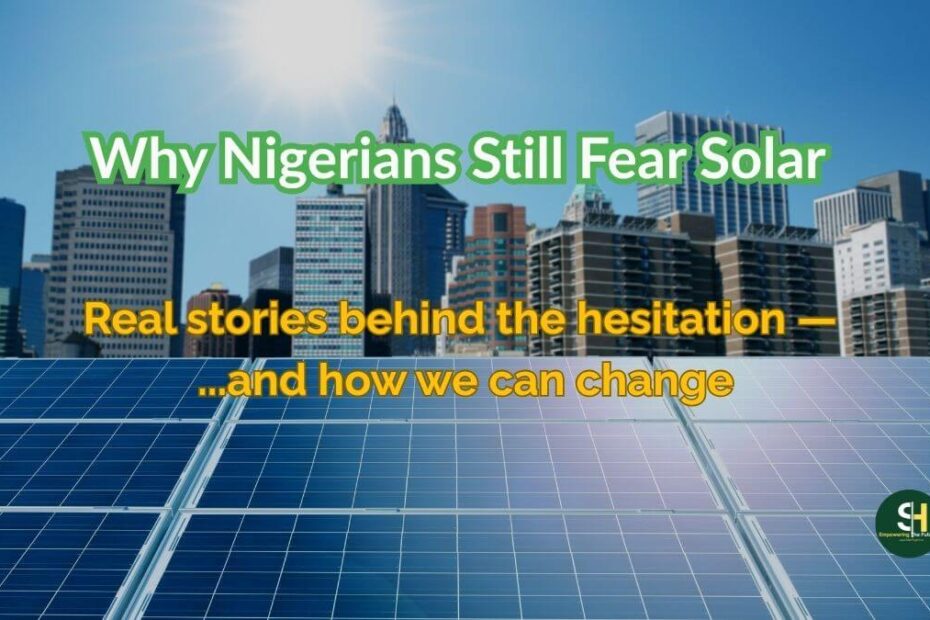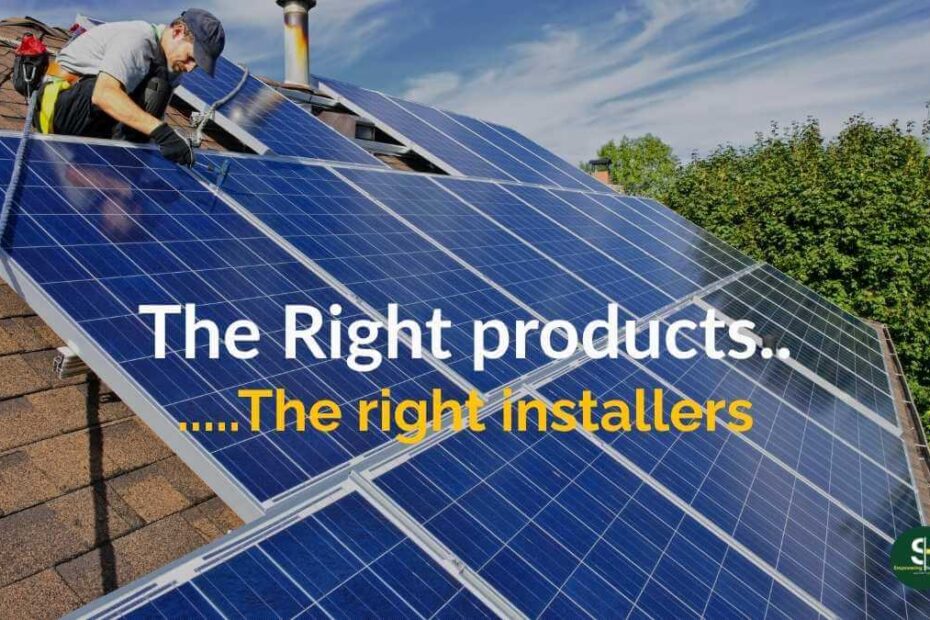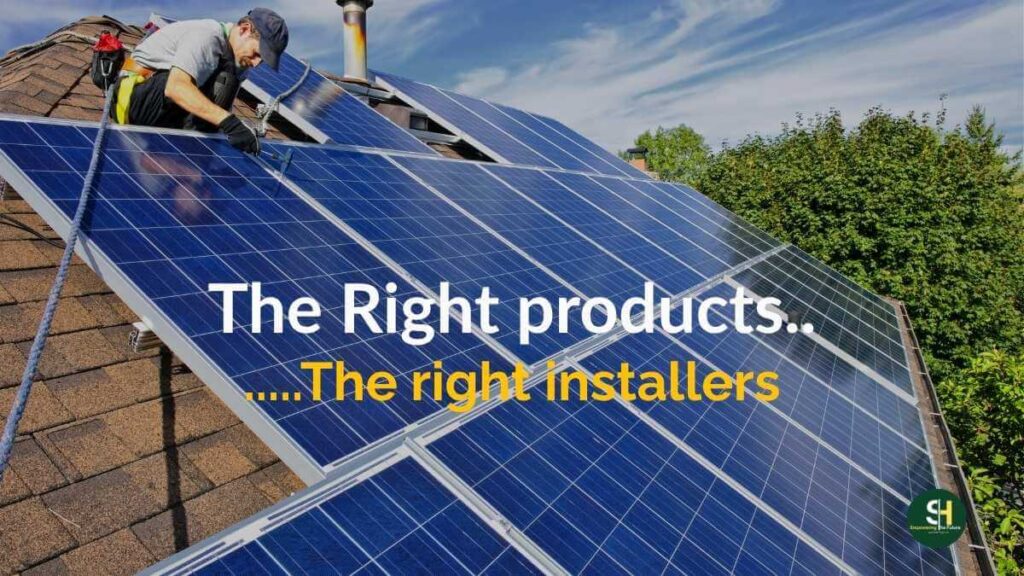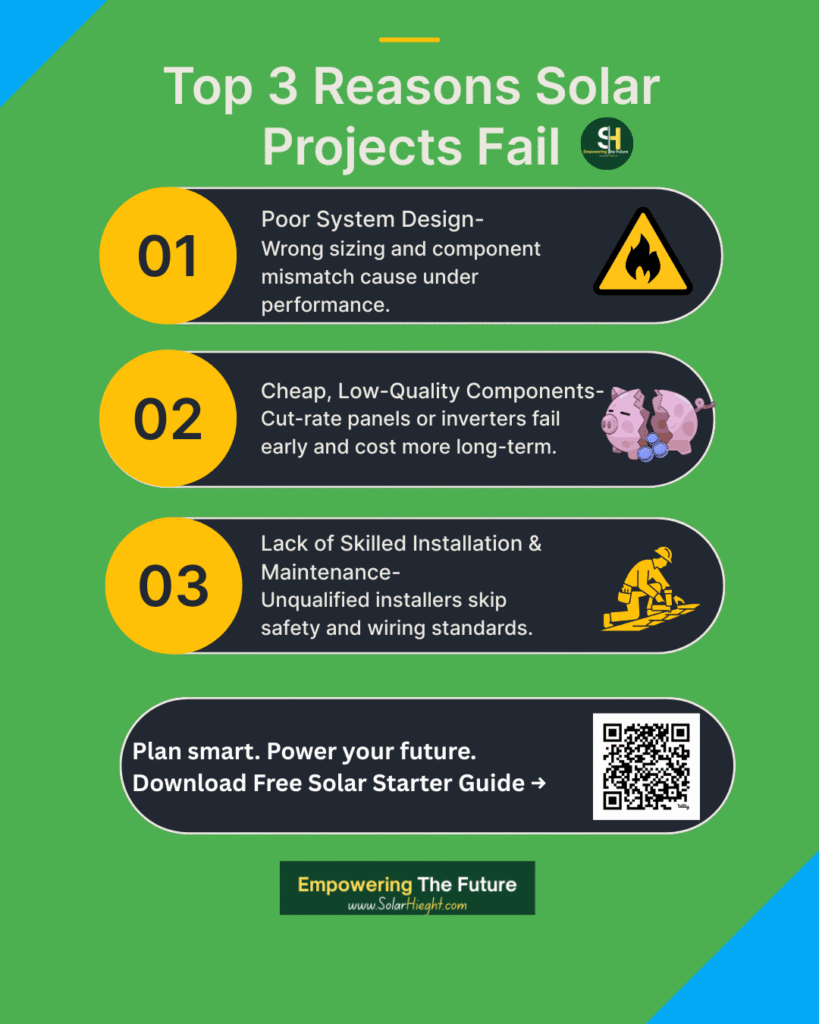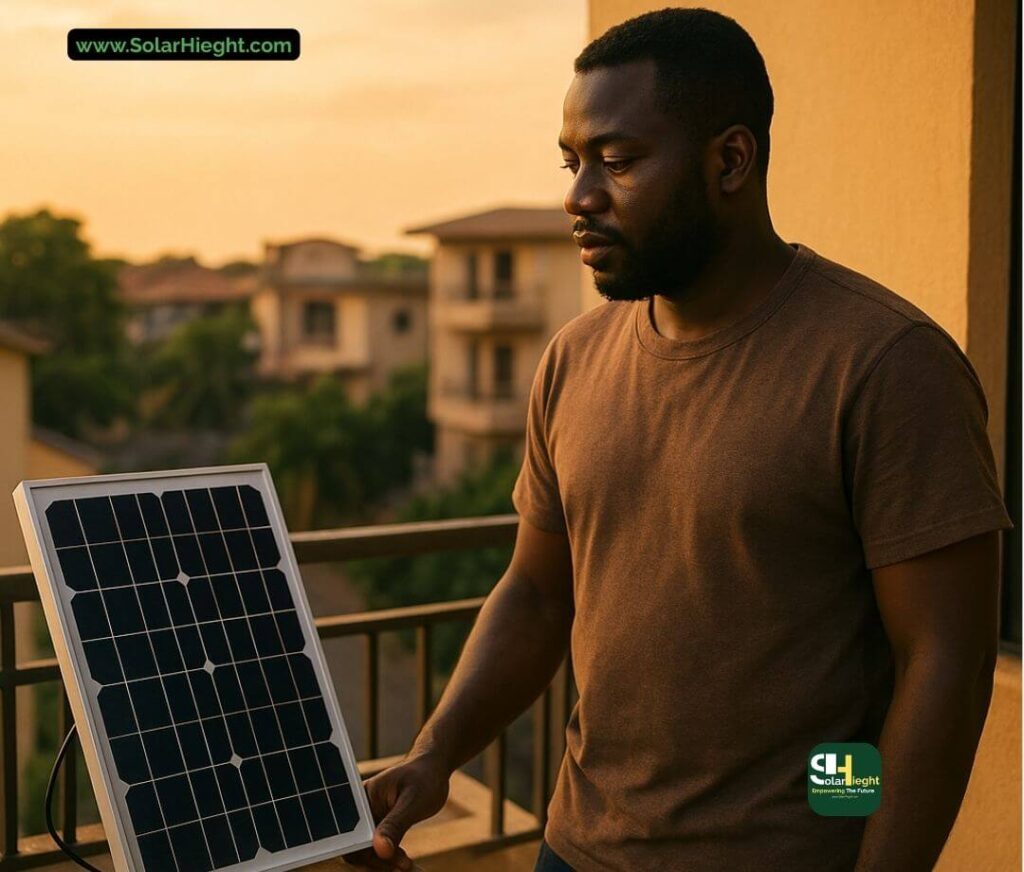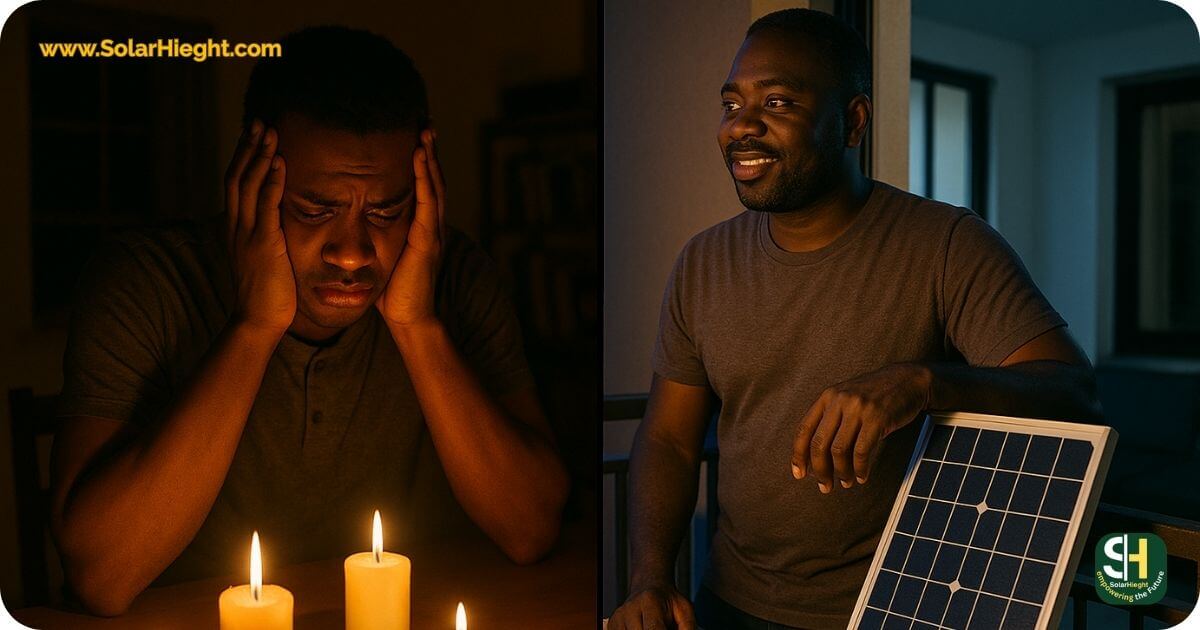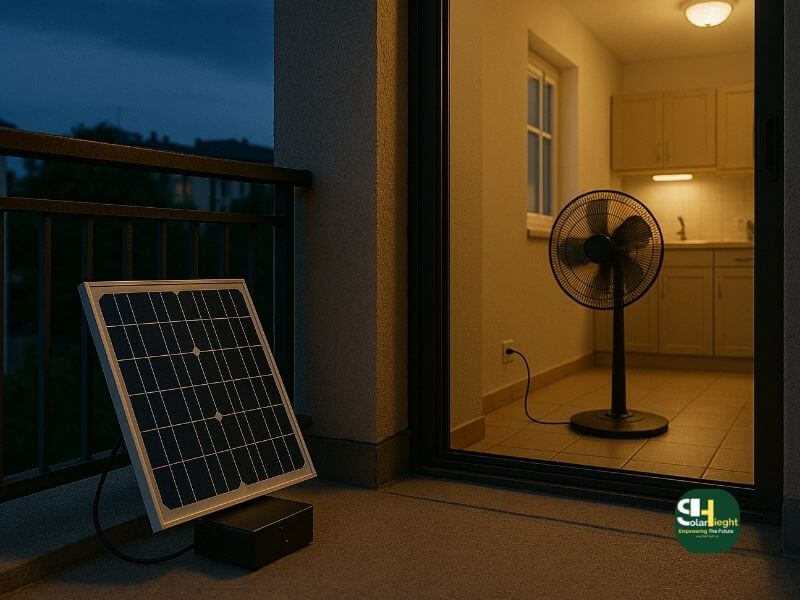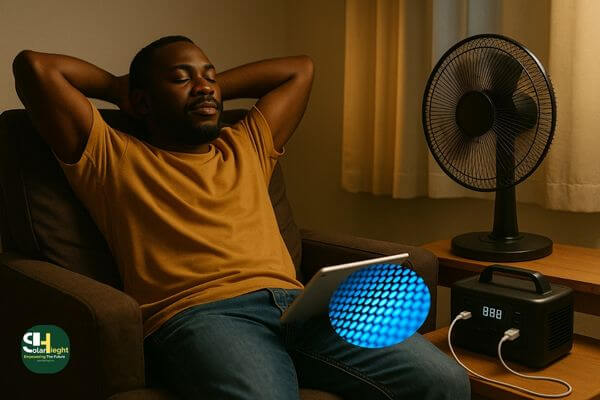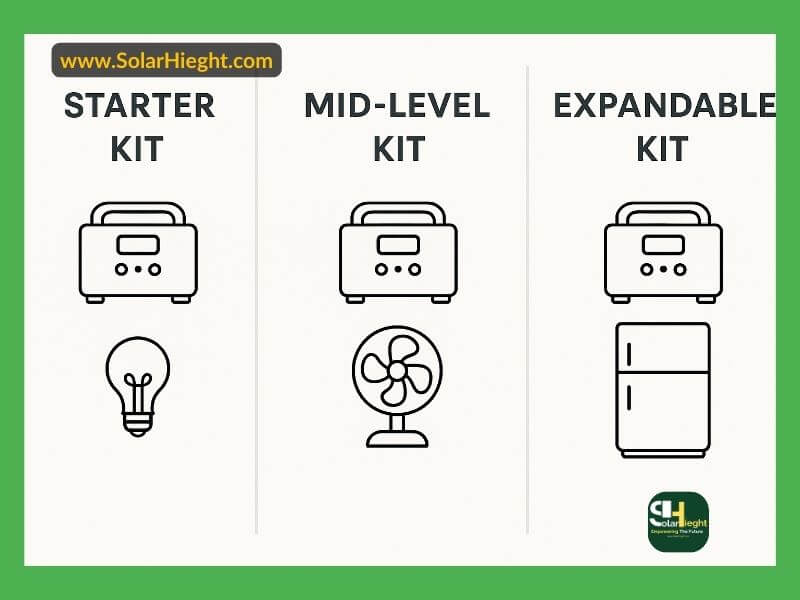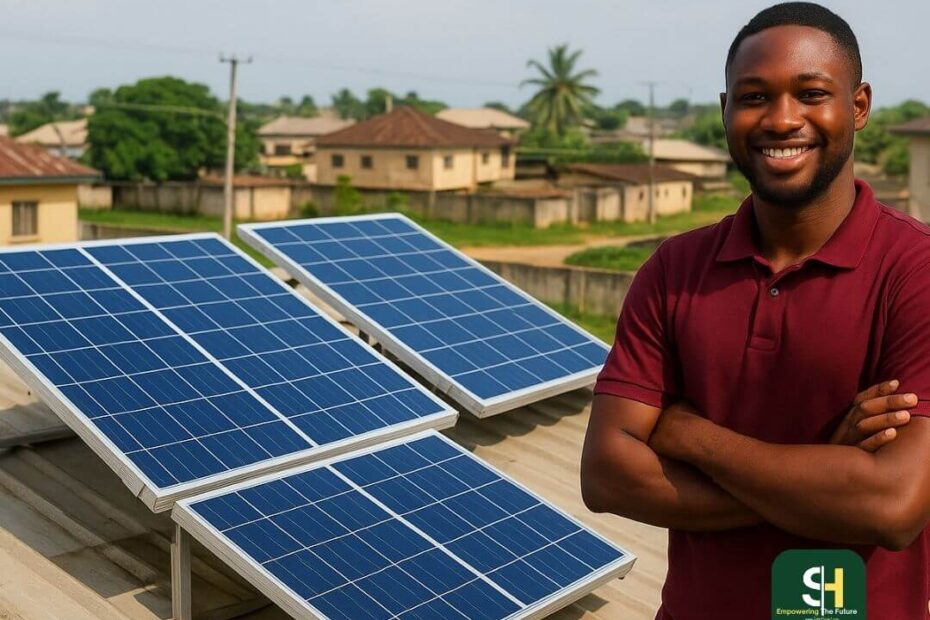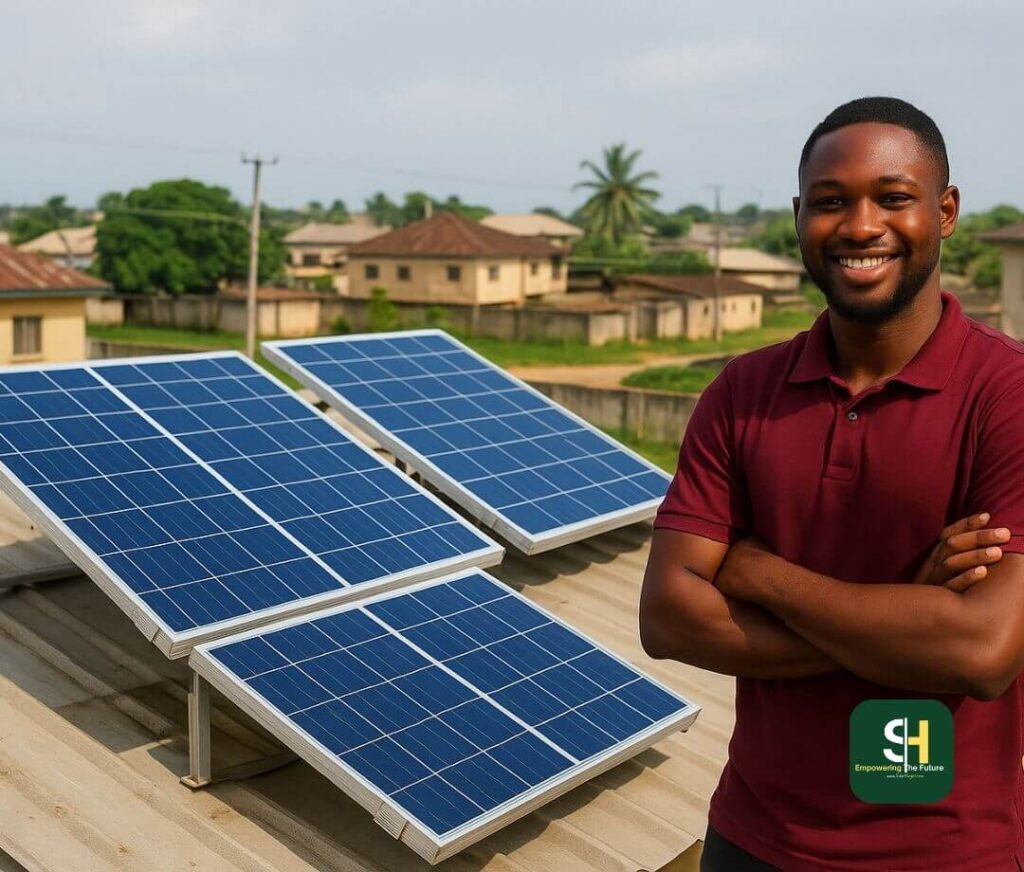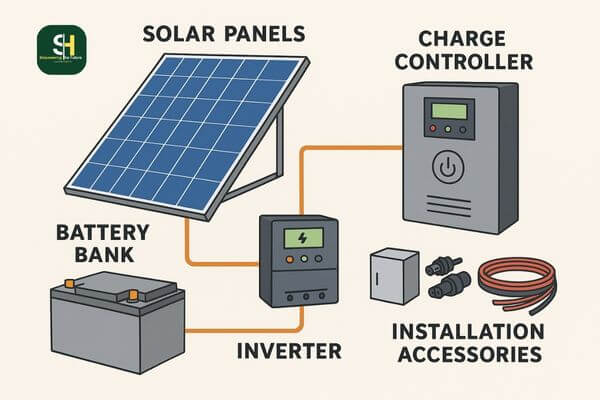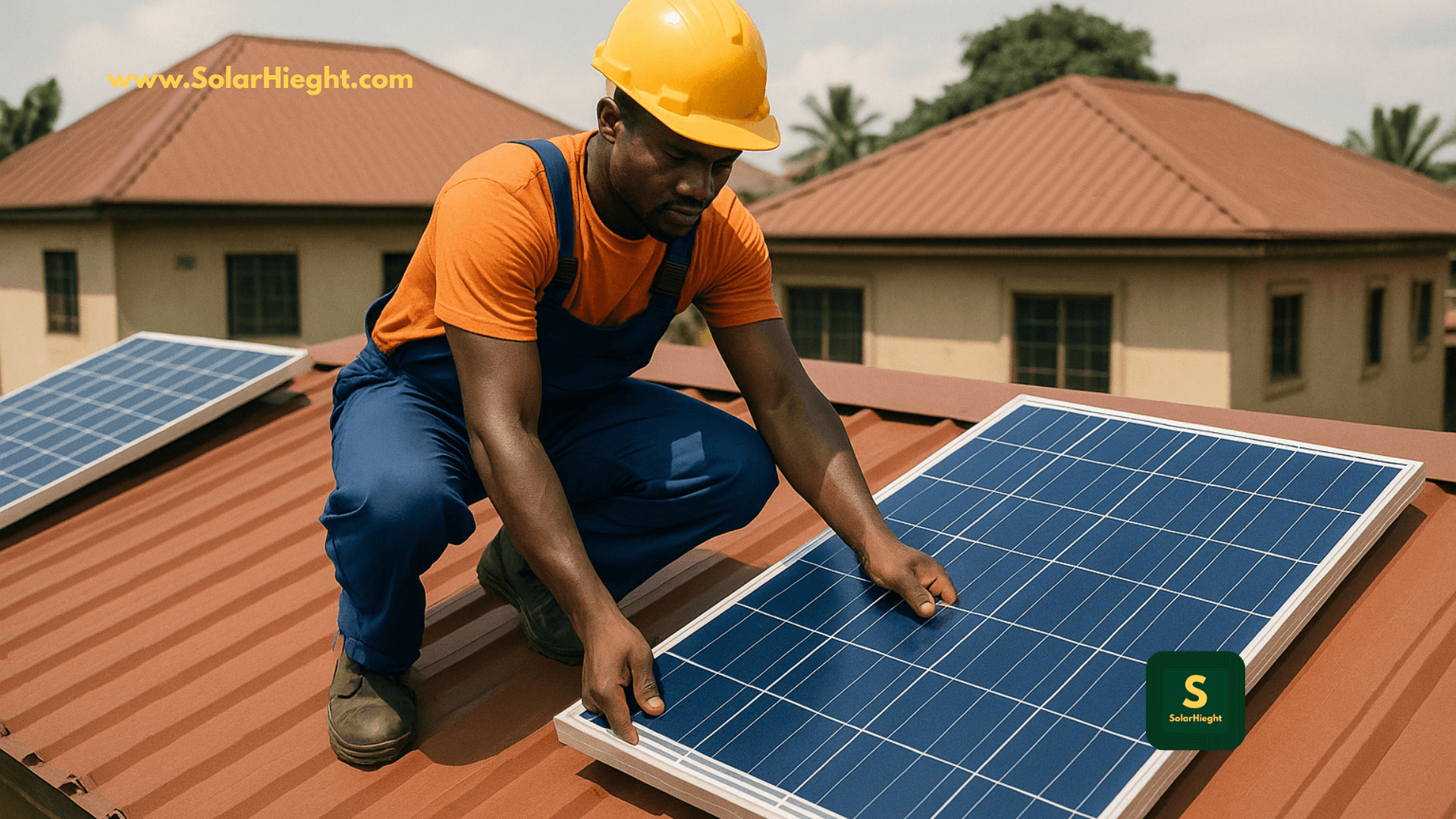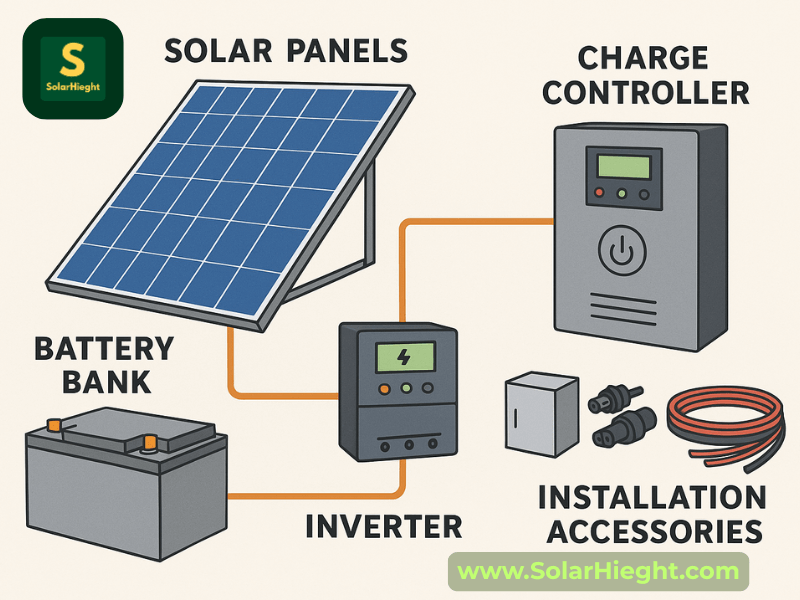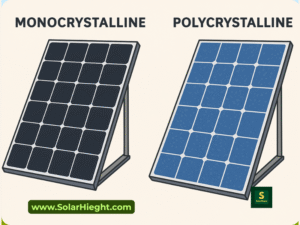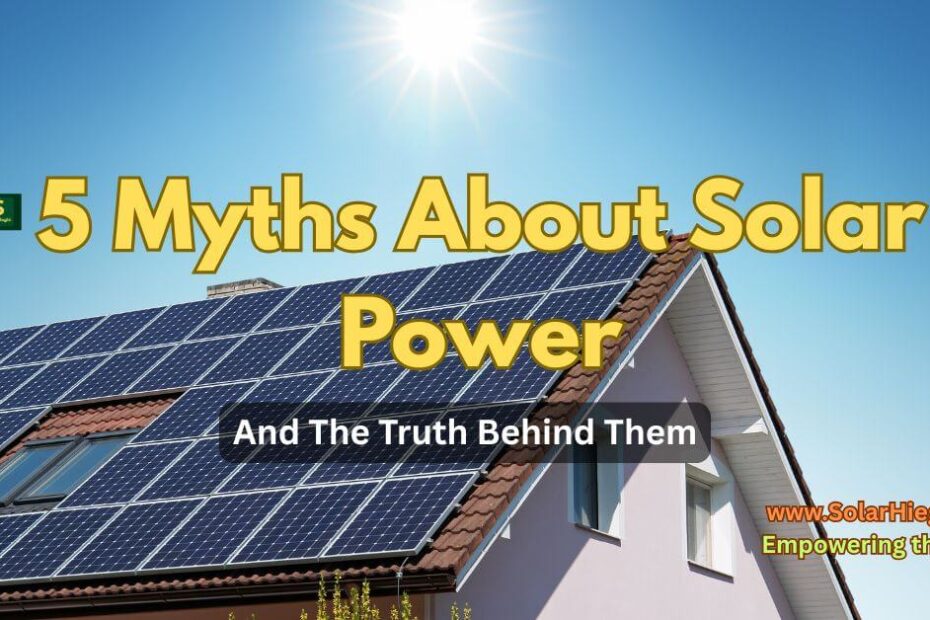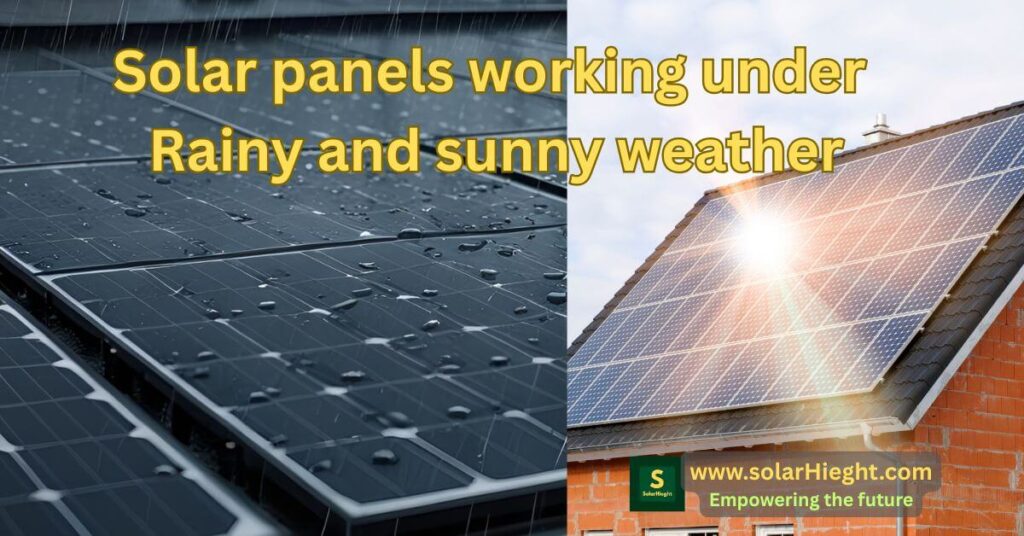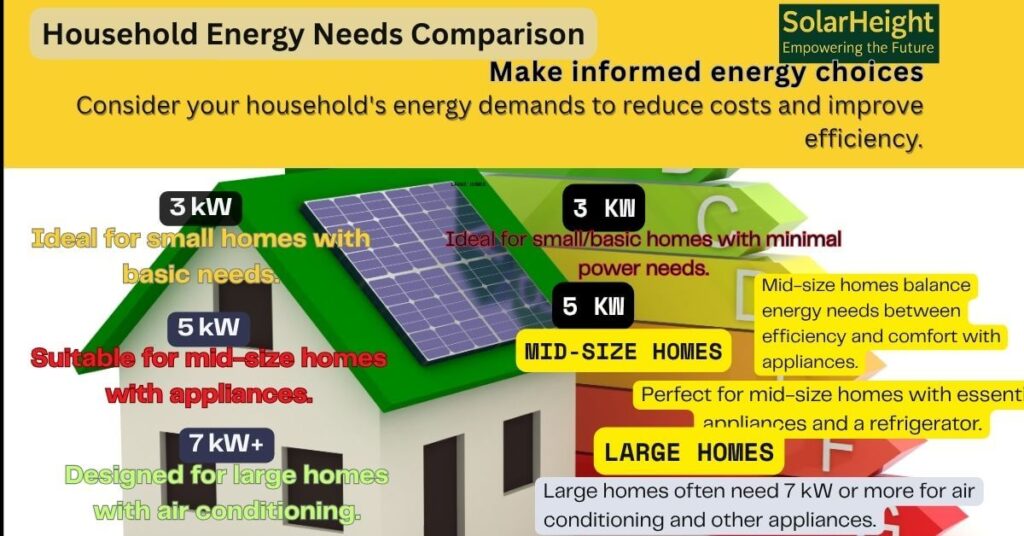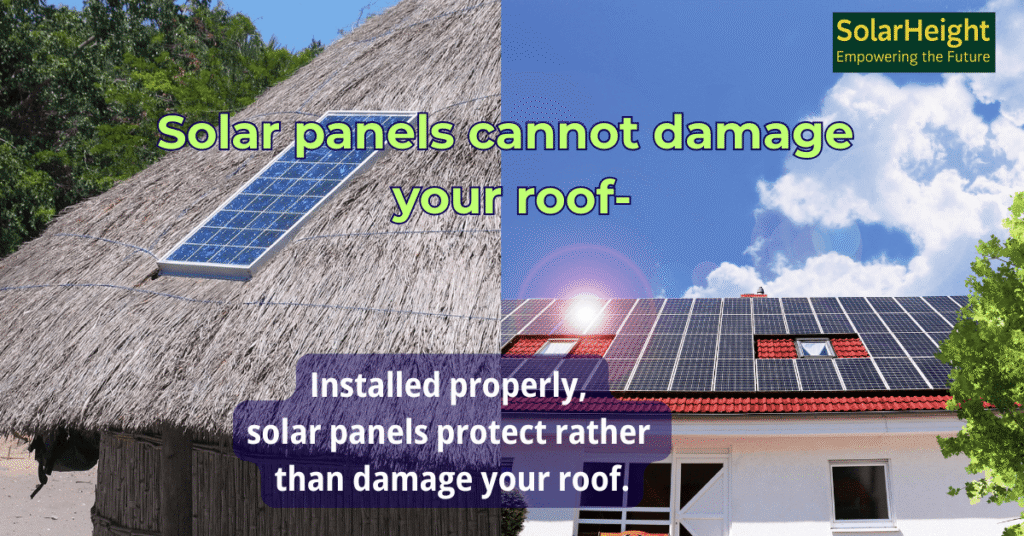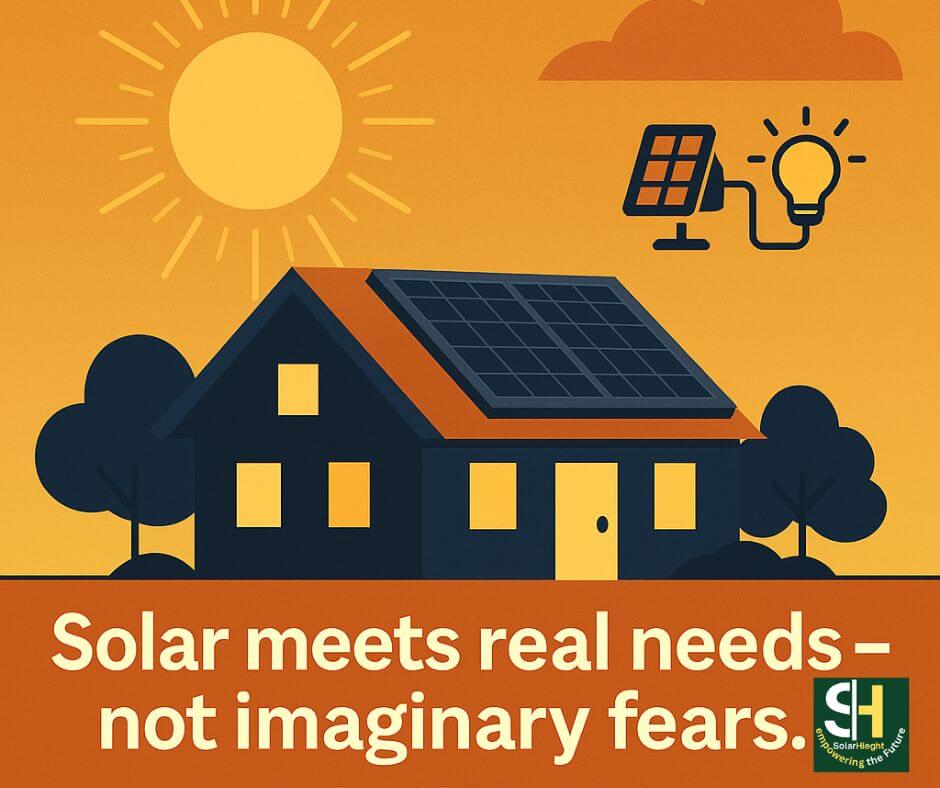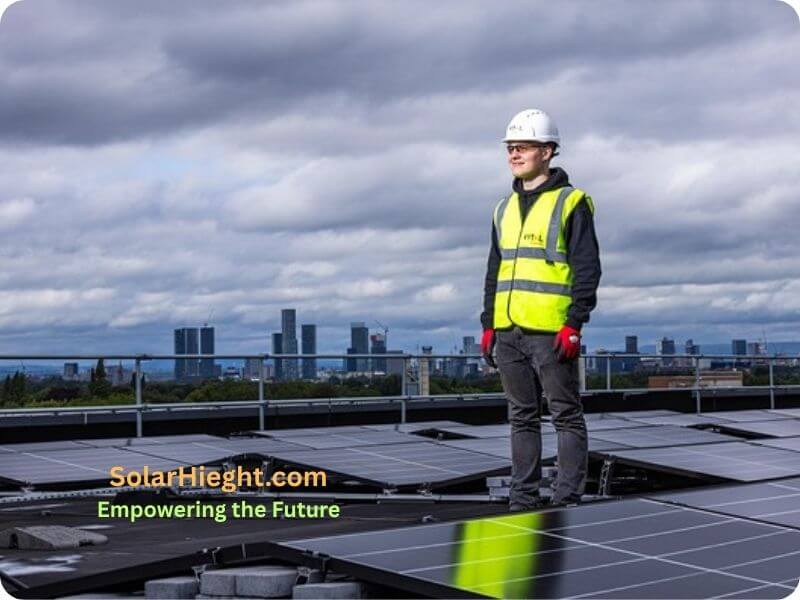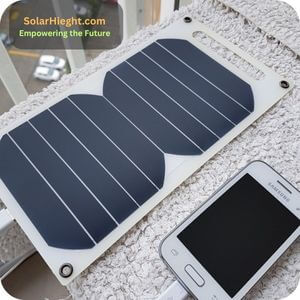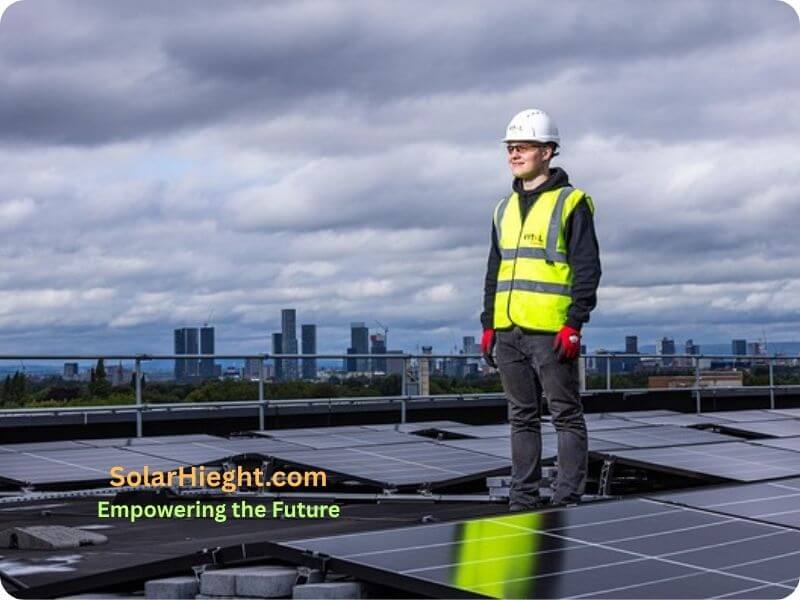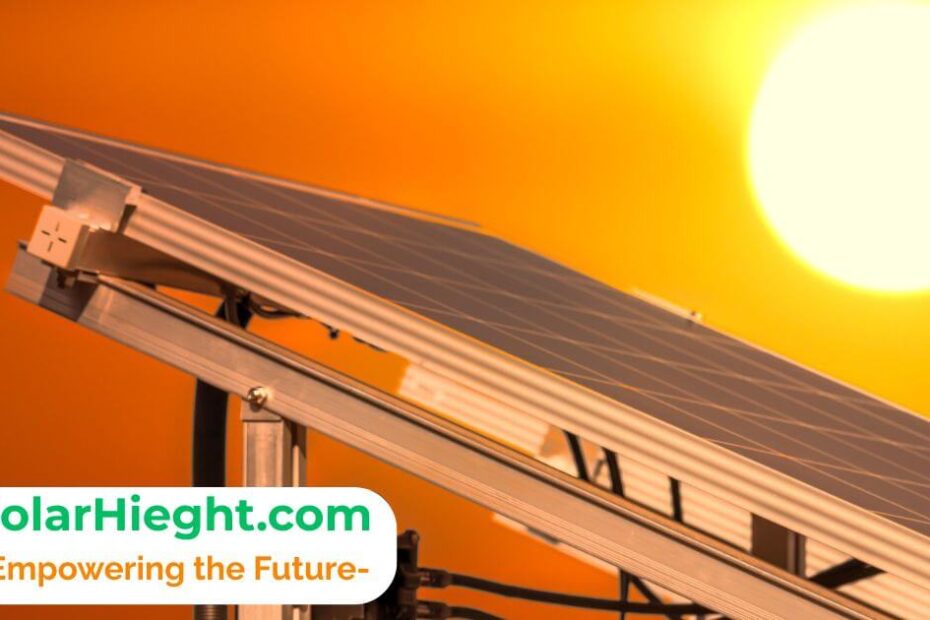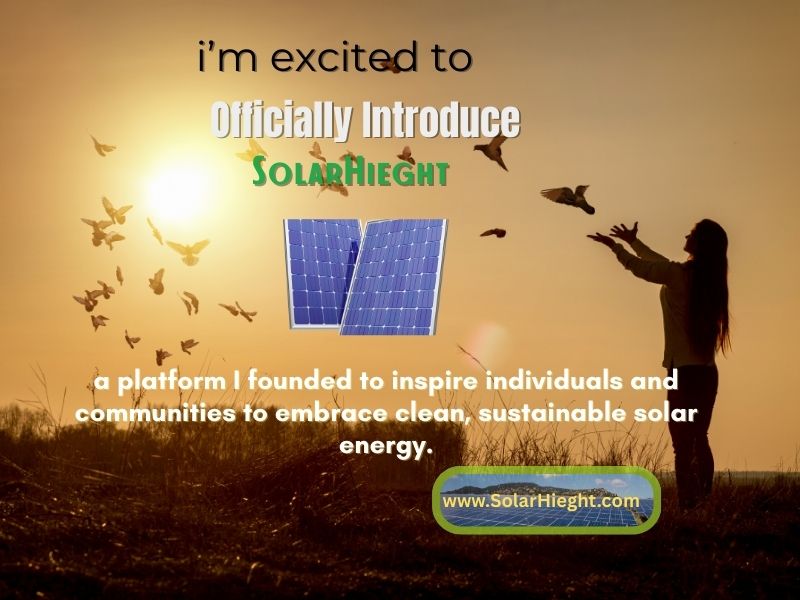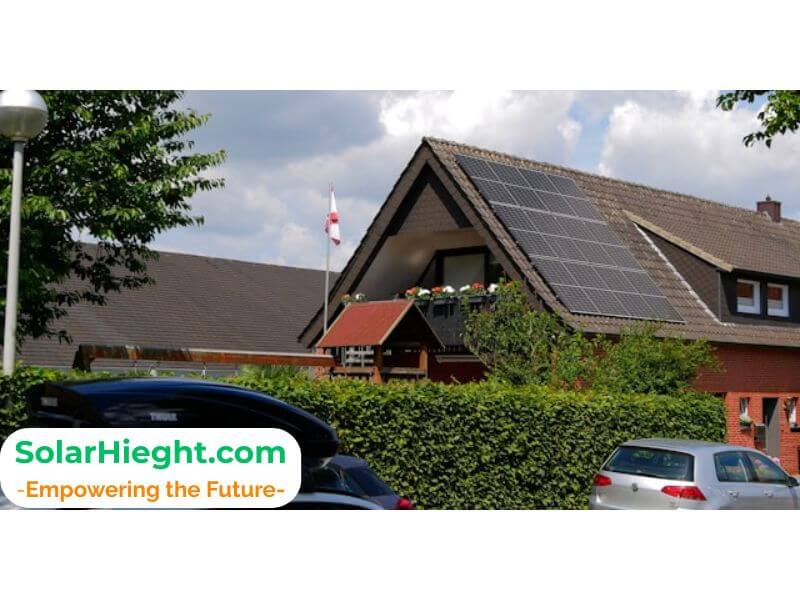Why Most Nigerians Still Fear Solar-A Practical Guide to Get Started Safely
Nigeria: A Country Full of Sun, But Not Yet Solar
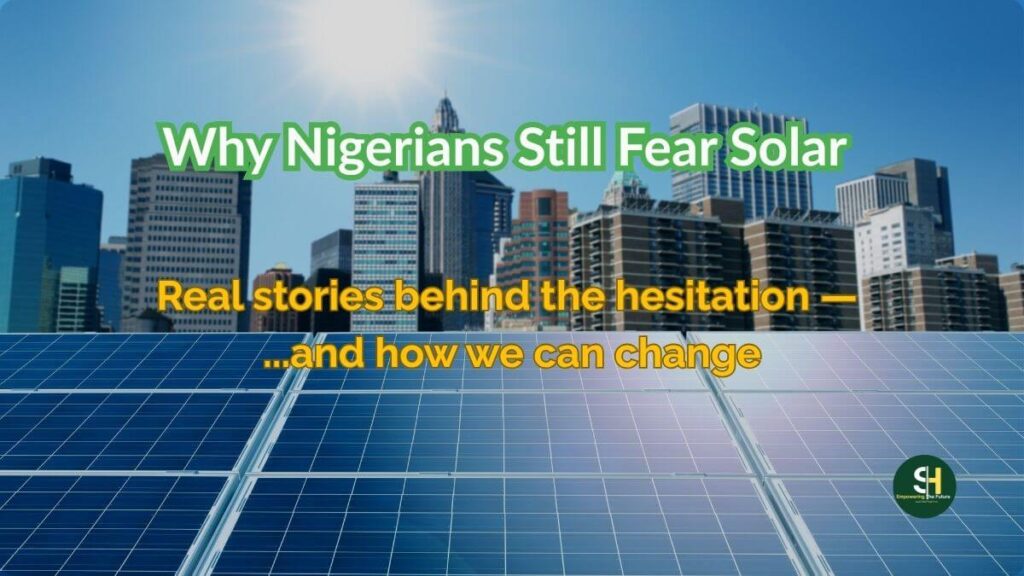
Nigeria enjoys one of the best sunlight levels in Africa, yet solar adoption remains surprisingly low. The irony is painful:in a country where the national grid provides barely 4 hours of power daily, millions still hesitate to switch to solar.This post explores the roots of that fear, shares real Nigerian stories, and offers practical ways to rebuild trust — whether you are a homeowner, trader, or simply curious about clean energy, this post is for you.
The Daily Power Struggles
From Lagos to Enugu, Abuja to Aba, Nigerians wake up each day unsure whether the light will stay on.
Mrs. Aisha, a small-shop owner in Lagos, once invested ₦3 million in a solar setup. Her installer vanished weeks later, leaving her with dead batteries and no refund.
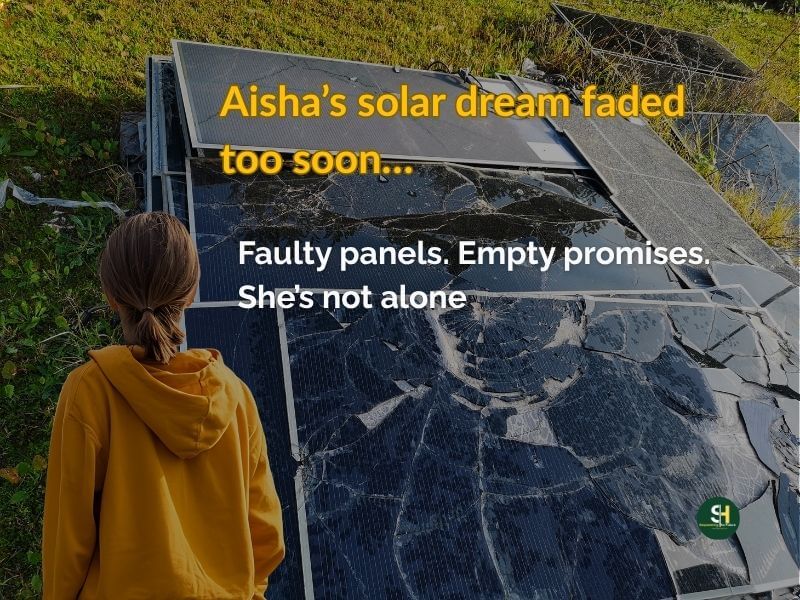
“I fear solar more than NEPA failure,” she sighs. Her story is far from unique. Many others share the same heartbreak. Yet some more are fed up with the erratic *kpo-kpo-kpo”of the generator, the endless expense of diesel, and the sudden silence when “NEPA takes the light.” They know solar energy is a sustainable, long-term solution. They have even seen their neighbour’s panels gleaming in the sun.
- But then, the doubts creep in.
- Is it not too expensive?
- What if they sell me fake products?
- Will it even work during the rainy season?
If this sounds familiar, you are not alone. Many Nigerians are hesitant to take the solar leap, not because they don’t want to, but because real fears are holding them back.The fear of solar isn’t about sunlight — it’s about trust, quality, and access. Downloaded our Free Solar Kit Checklist here for more information about your solar journey.
What Fuels the Fear of Solar?
1. High Upfront Costs and Scams
A decent home system costs around ₦2.5 – ₦3 million. Add fake installers who collect cash and disappear, and you get lasting distrust. This is the number one barrier. A solar system requires a significant initial investment, and when compared to the piecemeal cost of buying fuel, it can feel overwhelming if you have not seen our blog on this.
This is deep-seated and here is why: We are wired to feel the pain of a large, immediate payment more acutely than smaller, recurring ones. We see the N2.5 million price tag for a solar system but don’t easily calculate the N80,000 we spend “every single month” on fuel, maintenance, and replacement parts for a generator over 3-4 years.
2. Poor-Quality Products
This is a massive issue in the Nigerian market. Early buyers often ended up with low-grade kits or counterfeit inverters. When they failed, entire neighbourhoods declared solar a waste. This happens with most trends in Nigeria. And that is why, in SolarHieght, we advise that it is better to learn before you buy. Stories are rife of installers who vanish after receiving payment, leaving customers with a useless box of electronics.
The market is saturated with opportunists. This erodes trust for everyone, making it hard for legitimate companies to be believed. The fear of being scammed out of a huge investment is paralysing.
3. Lack of Skilled Technicians And Complex Technical Terms
Across both cities and villages, trained technicians remain scarce. Wrong wiring and poor maintenance lead to quick system failures. According to Reuters “In Nigeria, practical skills training is practically absent in colleges” bridging this skills gap could impact the solar sector greatly.
In the other hand, terms like inverters, charge controllers, kilowatt-hours, and amp-hours can sound like a foreign language. This complexity makes the process feel intimidating and opaque.People fear what they don’t understand. Without a clear, simple explanation, it is easy to feel like you are at the mercy of a salesperson and can’t make an informed decision.
4. Lack of Government Support & Unclear Regulations
While this is changing, there’s a perception that there’s no safety net or regulatory framework for solar energy, unlike the (theoretical) structure provided by DISCOs. Big projects stall; homeowners face failures alone. Manufacturer’s Warranties becomes useless in the face of lack of strong consumer protection policy. And as a result, the market becomes a gamble. We are accustomed to systems failing due to poor policy. The fear is that the government won’t support the industry, leading to a lack of standards or consumer protection.
In Germany as in many other countries, the Renewable Energy Sources Act (EEG) is a bill that ensures consumers are protected in this industry. Zero VAT on solar materials for upward of 30 years are some of the Tax benefits covered by the bill. More so, there is the KFW loans and regional grants offered by regional governments as part of the protections that consumers enjoy. In addition, companies that sale and offer solar related services have very strong warranties attached to all their products which not only boost confidence but also protect consumers. It is important to note that the updated environment that changes to the EEG bill adopted in the recent past, has made the Consumer and citizen energy communities grow even stronger.
5.Reliability
What Happens When the Sun Doesn’t Shine?
The Nigerian sun is powerful, but it is not constant. The long rainy season and dusty harmattan conditions lead to a very valid question: will I be left in the dark?We have been let down by unreliable power sources for decades. The fear of investing in another system that might fail us when we need it most—at night, during a cloudy Knight—is a major psychological block.
Real Stories That Break the Fear
The Sabon Gari Market Mini-Grid (Kano)
For years, traders in the Sabon Gari Market relied on diesel to power their systems and business as a measure to forestall the epileptic nature of the national grid. The consequences-unbearable noise pollution, exhausting effects of carbon dioxide emission and th suffocating effects of the both mentioned above became unbearable. Working through The Rural Electrification Agency, the Nigerian government partnered with Victron Energy to build a smart solar solution that transformed the life of traders at the Sabon Gari Market. That effort saw the birth of a solar mini-grid that instantly transformed over 160 shops. The mini grid was structured to allow for growth and optimisation in the energy capacity of the mini solar infrastructure. In one of my posts on SolarHieght, I emphasised that smart energy solutions are achievable through structuring solar systems in a ways that allow growth and optimisation as energy need grows. This is a good example of that. The Mini Grid Structure was built in a way that energy capacities can be scaled by adding additional parts to the old ones. For instance, adding a few more panels, inverters etc, that takes care of the increasing or growing energy needs without loosing any part of the energy infrastructure. You can also adopt this strategy. With the new solar infrastructure the traders in Sabon Gari market are, in many ways improving their productivity, while at the same time reducing noise pollution that was the bane of the pre-mini Grid Era.
“It’s like moving from hell to heaven,” says Musa, a shoe seller at the market who survived the pre-grid era and is now enjoying the post-grid era. Now he can confidently point out to quite a few differences between the two eras.
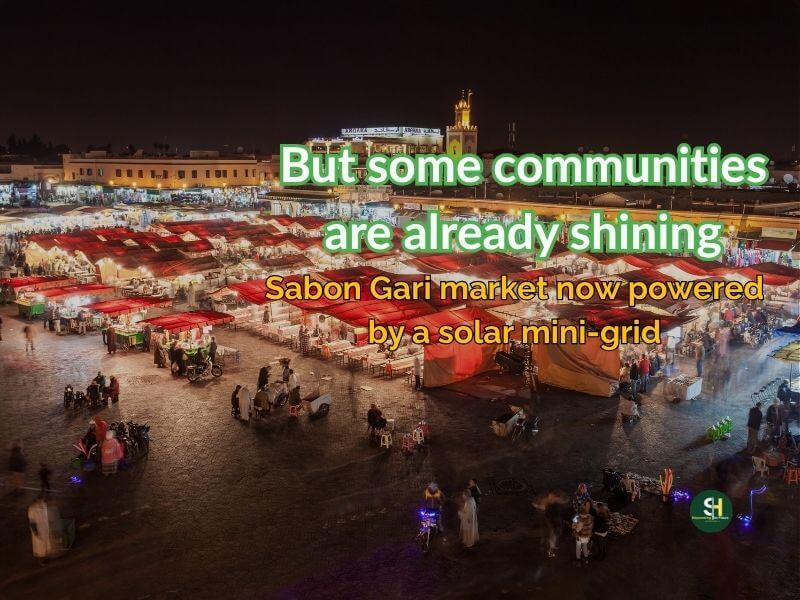
Arnergy & Husk Power’s Pay-As-You-Go Model
The above is modeled after the Mobile phone system, the Arnergy & Husk´s Pay as You Go (PAYG) is leveraging smart solutions to offer users the possibility of accessing solar energy by paying ₦500 – ₦1 000 daily via mobile money. Systems come installed, monitored, and serviced. Low income households could now charge their phones. This way you don’t need to own an entire solar system to be able to use basic energy needs. A few thousands could help you stay connected and do other things that you would have not been able to do without these developments.
Young Nigerians are becoming certified “energy officers,” building local trust and new jobs.
AP News — Solar Jobs in Nigeria
How to Adopt Solar Energy with Confidence
Beating the Cost Fear: Smart Financing & The True Cost of Ownership
The first step would be to shift mindset from “initial cost” to “long-term value”. This is the key because there is no doubt that the initial investment in solar in comparison to the monthly costs of NEPA and diesel (for those who combine NEPA with generator) shows a great difference in cost. A more smart approach would focus on the long term costs of both which indicates, very clearly, how the initial investments in solar systems palls tremendously in comparison to the cost of NEPA bill and diesel for say 10 year period.
Explore Phased Implementation:
You don’t have to power your entire house at once. Start with a “Solar Essential” system that runs your lights, fans, TVs, and sockets.Check the right sizing and battery basics. Later, you can expand to include heavy loads like air conditioners.In doing so, check available financing options because some reputable companies now offer payment plans. If this exists in your area, ask what options are available, scale with anyone that appeals to you and negotiate with them on how the costs can be spread over time. Below is a video from our Youtube channel showing how one can start with small and grow with time without having to lose any of your investments. You can also check our solar kit to see how you can build your solar system step by step. You must not break a bank to do so.
The Critical Role of a Professional Audit:
A trustworthy installer will not just give you a price. They will conduct an “energy audit” to list all your appliances, their power consumption, and how long you use them. This data is used to “right-size” your system, ensuring it can handle your needs. The concept that Battery is King is derived from the Reliability question that must be answered in choosing your battery type.The panels collect energy, but the batteries store it for use at night or on cloudy days. Therefore, investing in quality batteries (good tubular gel or lithium-ion) with a long lifespan is crucial. Don’t cut corners here. https://solarhieght.com/solar-projects-fail-nigeria/
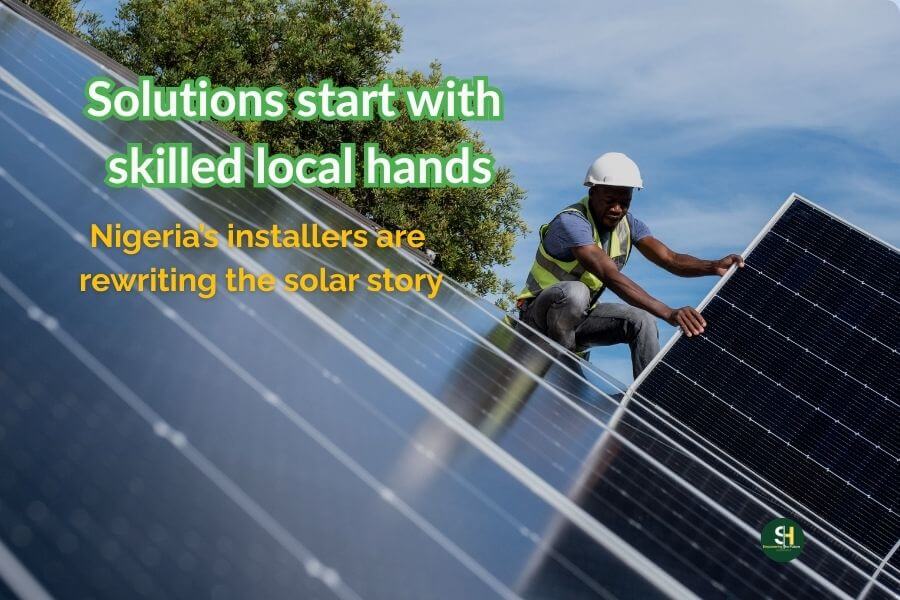
Avoid Scams: Adopt the 5-Step Vetting Process for Solar Installers
This is your most powerful tool. Do not skip these steps.
1. Demand Verifiable References: Ask for contact details of at least two past clients in your area. A legitimate company will be proud to connect you.
2. Check for a Physical Address & Track Record: Visit their office. How long have they been in business? A company with a physical presence is less likely to disappear.
3. Scrutinize the Quotation: A vague quote is a red flag. The quote must itemise brands and models for “every” component (Panels, Inverter, Batteries, etc.). This allows you to research the quality of the products.
4. Ask About the Warranty:There should be two warranties: a manufacturer’s warranty on the parts (e.g., 25 years on panels, 5 years on inverters) and a “workmanship warranty” on the installation itself (e.g., 1-2 years).
5. “Check Their Digital Footprint:” Look for reviews on Google, Facebook, and other platforms. A complete absence of an online history is a warning sign.
Demystifying the Tech:
A Simple Guide to Key Components of the solar energy systems would help to adopt solar energy with confidence. You need not be an expert but understanding these components will save you a hell of troubles. So let’s demystify this. Think of your solar system like a human body: The Solar Panels is the “Muscles”. They capture the sun’s energy. The Inverter is the Brain & Heart. It converts the energy from the sun into usable power for your home and manages the entire system. In the vain, think of the Batteries as the Fuel Tank. They store energy for when you need it. There is the Charge Controller: This is the Regulator that protects your batteries from overcharging.
Like I said before, you don’t need to be an expert or engineer, but knowing these basic concepts empowers you to have an intelligent conversation with any installer.
Why Solar Still Wins in the Long Run
- Reliability: Solar systems with batteries deliver more consistent power than the grid.
- Savings: Less spending on diesel generators over time.
- Health & Environment: No fumes or noise from generators.
- Jobs: Solar creates local employment—installers, technicians, sales agents.
Community Impact: Schools and clinics stay lit for longer hours. Women and students benefit especially (CLG Global, Reddit, Wikipedia, Reuters,
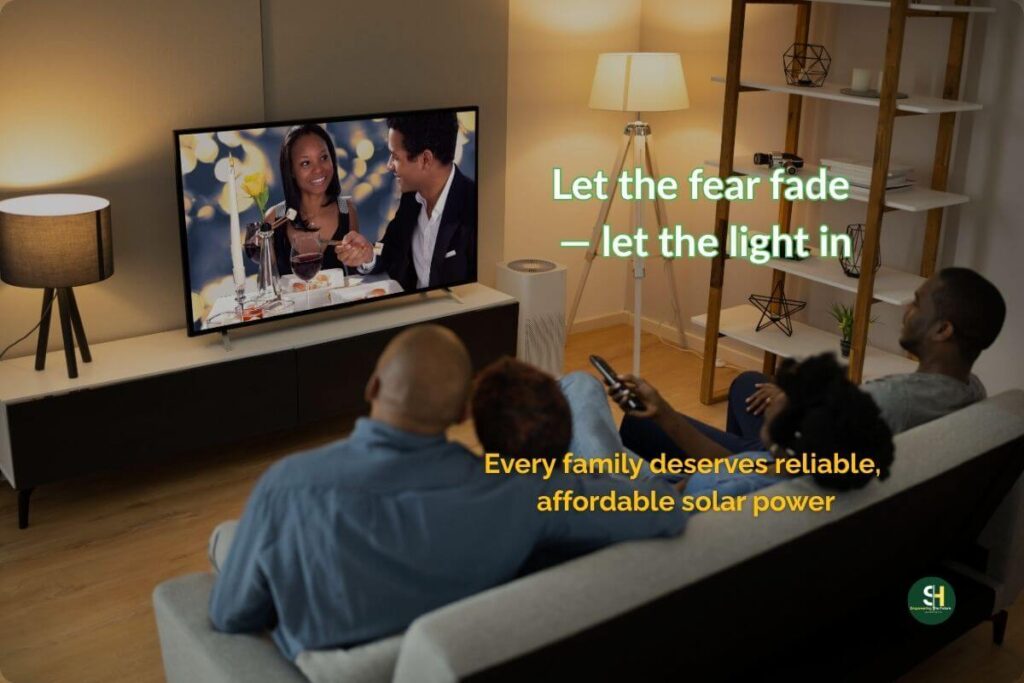
Conclusion: Don’t Fear the Sun — Own It
Solar energy isn’t the enemy; it is the escape route from darkness. The fear came from poor products and bad experiences. The transition to solar isn’t just about technology; it is about making a smart, informed financial decision for long-term peace and independence. The fears are real, but they are beatable with the right knowledge and leveraging on new financing models, certified technicians, and transparent companies that are now abound in the solar energy space..
At SolarHieght, we believe in transparency, quality, and building trust. We tackle these fears every day by providing you with simple solar energy facts, smart solutions, detailed audits procedures, how to identify only tier-one components, guides to robust warranties, and guiding you every step of the way. If you have had any doubts towards going green or find any solution not mentioned above but advances the interests and engagement in solar, please do not hesitate to contact us.
Frequently Asked Questions (FAQ)
Q: How much does a solar system for a 3-bedroom flat in Lagos cost?
A: ✅ It depends entirely on your energy needs. A basic system powering lights, fans, TV, and a fridge might start around N1.2 million. A full system that can also power 1-2 air conditioners could range from N2.5 – N4 million. The only way to get an accurate price is through a professional energy audit.
Q: Can solar power an air conditioner?
A: ✅ Absolutely! The key is to design a system with enough panels and battery storage to handle the high startup and running power of an AC unit. This is a standard request we handle.
Q: What is the lifespan of solar panels in Nigeria’s harsh weather?
A: ✅ High-quality panels are built to withstand harsh conditions, including rain, heat, and even hail. They typically come with a 25-year performance warranty, guaranteeing they will still produce at least 80% of their original capacity after 25 years.
Q: How do I maintain my solar system?
A: ✅ Maintenance is minimal. The main task is periodically cleaning the panels from dust and dirt to ensure maximum efficiency. The inverter and batteries require no regular maintenance from you if installed correctly.
Q: What if I can’t afford a full system?
A: ✅ Start small. A ₦80 000–₦150 000 kit can power fans and lights; scale later.
